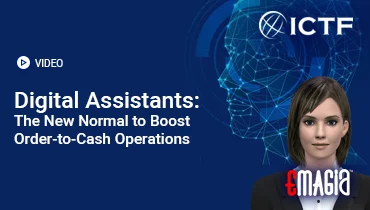In the complex and ever-evolving landscape of the financial sector, risk management is not merely a regulatory requirement; it is the bedrock upon which trust, stability, and profitability are built. Banks operate within an intricate web of potential threats, ranging from credit defaults and market volatility to sophisticated fraud schemes and constantly shifting regulatory mandates. Traditionally, managing these myriad risks has been a labor-intensive, often reactive process, reliant on historical data and human expertise, which can struggle to keep pace with the speed and scale of modern financial transactions.
However, a profound transformation is underway. Artificial Intelligence (AI) is rapidly emerging as a game-changer in the realm of banking risk management, offering unprecedented capabilities to identify, assess, and mitigate threats with a level of speed, accuracy, and foresight previously unimaginable. By leveraging advanced algorithms and machine learning, banks are moving beyond reactive measures to embrace proactive, intelligent risk strategies that enhance security, optimize decision-making, and ensure long-term resilience.
This comprehensive guide will delve deep into the transformative impact of AI on financial safety. We will explore how is AI used in risk management in banks, dissecting its core applications across various risk categories, illuminating its profound benefits for financial institutions, and providing insights into the technologies that power this revolution. Join us as we uncover how AI is not just a tool but a strategic partner in safeguarding the integrity and stability of the global banking system, paving the way for a more secure and efficient financial future.
Understanding Risk Management in Banking: The Core Challenge
Before exploring AI’s role, it’s essential to understand the fundamental types of risks banks face and the traditional challenges in managing them.
What is Risk Management in Banking? Safeguarding Financial Stability.
Risk management in banking is the systematic process of identifying, assessing, monitoring, and mitigating financial and operational risks that could negatively impact a bank’s capital, earnings, or reputation. Its primary goal is to ensure the long-term stability and profitability of the institution while complying with regulatory requirements. Effective risk management allows banks to make informed decisions about lending, investing, and operational processes, balancing risk and reward. It is a continuous, dynamic process crucial for maintaining public trust and systemic financial health.
Key Types of Risks Faced by Banks.
Banks are exposed to a diverse range of risks, each requiring specialized management strategies:
- Credit Risk: The risk of loss due to a borrower’s failure to repay a loan or meet contractual obligations. This is often the largest risk for banks.
- Market Risk: The risk of losses in positions arising from movements in market prices (e.g., interest rates, foreign exchange rates, equity prices, commodity prices).
- Operational Risk: The risk of loss resulting from inadequate or failed internal processes, people, and systems, or from external events (e.g., human error, system failures, cyberattacks, fraud).
- Liquidity Risk: The risk that a bank will be unable to meet its short-term financial obligations.
- Regulatory Compliance Risk: The risk of legal or regulatory sanctions, financial loss, or reputational damage resulting from a failure to comply with laws, regulations, rules, and standards.
- Reputational Risk: The risk of damage to a bank’s reputation, often stemming from other risk failures, which can lead to loss of customer trust and business.
- Cybersecurity Risk: The risk of financial loss, disruption, or damage to a bank’s reputation from a failure of its information technology systems or data breaches.
Managing this complex array of risks traditionally requires significant human effort and resources.
Traditional Challenges in Banking Risk Management.
Before AI, banks faced several inherent challenges in managing risk effectively:
- Data Volume and Velocity: Processing vast amounts of transactional data, market feeds, and customer information manually is overwhelming.
- Siloed Data: Risk data often resides in disparate systems, making a holistic view difficult.
- Reactive Approach: Traditional methods often identify risks after they have materialized, leading to losses rather than prevention.
- Human Error and Bias: Manual processes are prone to mistakes, and human judgment can be influenced by bias.
- Evolving Threats: New types of fraud, cyberattacks, and market shifts emerge rapidly, making it difficult for static, rule-based systems to adapt.
- Regulatory Burden: Keeping up with ever-increasing and complex regulatory requirements is a significant challenge.
These challenges underscore the critical need for advanced technological solutions like AI.
How is AI Used in Risk Management in Banks: Core Applications
Artificial Intelligence is transforming banking risk management by providing powerful capabilities across various risk categories. Here’s how is AI used in risk management in banks today.
1. AI for Credit Risk Assessment in Banks.
Credit risk is paramount for banks, and AI is revolutionizing how it’s assessed:
- Enhanced Credit Scoring Models: AI/ML algorithms analyze a much wider array of data points than traditional models, including structured data (credit history, income, debt-to-income ratio) and unstructured data (social media sentiment, news articles, transaction patterns). This provides a more nuanced and accurate assessment of a borrower’s creditworthiness.
- Predictive Default Modeling: ML models can predict the likelihood of loan defaults with higher accuracy by identifying subtle patterns and correlations that human analysts might miss.
- Early Warning Systems: AI can continuously monitor borrower behavior and market conditions to detect early warning signs of financial distress, allowing banks to intervene proactively.
- Automated Loan Underwriting: AI can automate parts of the loan application and underwriting process, speeding up approvals for low-risk applicants while flagging complex cases for human review.
This leads to better lending decisions, reduced non-performing loans, and optimized loan portfolios.
2. AI for Fraud Detection in Banking.
Fraud is a constant and evolving threat. AI offers powerful tools for real-time detection and prevention:
- Anomaly Detection: AI algorithms analyze vast volumes of transactional data in real-time to identify unusual patterns or deviations from normal behavior that may indicate fraudulent activity (e.g., sudden large transactions, purchases from unusual locations, unusual login attempts).
- Behavioral Biometrics: AI can analyze unique user behaviors (e.g., typing patterns, mouse movements) to authenticate users and detect suspicious activity.
- Network Analysis: Identifying fraudulent rings or organized crime by analyzing connections between accounts and transactions.
- Anti-Money Laundering (AML) & KYC: AI enhances AML efforts by sifting through massive amounts of data to identify suspicious money laundering patterns and improve Know Your Customer (KYC) processes by automating identity verification and screening against watchlists.
- Adaptive Learning: AI models continuously learn from new fraud tactics, adapting their detection capabilities to stay ahead of evolving threats.
This proactive approach significantly reduces financial losses and protects customer assets.
3. AI for Regulatory Compliance in Banks.
The burden of regulatory compliance is immense. AI helps banks navigate this complexity:
- Automated Compliance Monitoring: AI can continuously monitor transactions, communications, and internal processes to ensure adherence to regulatory requirements (e.g., GDPR, Basel III, Dodd-Frank).
- Regulatory Change Management: Natural Language Processing (NLP) can scan vast amounts of regulatory documents, news feeds, and legal updates to identify new or changed regulations, assess their impact, and recommend necessary adjustments to internal policies and systems.
- Automated Reporting: AI can automate the collection, validation, and formatting of data for regulatory reports, reducing manual effort and ensuring accuracy.
- Risk and Control Self-Assessments (RCSA): AI can assist in evaluating and verifying that controls are sufficiently mitigating risks and ensuring compliance.
- Client Lifecycle Management (CLM): AI streamlines KYC and AML checks during client onboarding and ongoing monitoring, ensuring compliance throughout the client relationship.
This reduces the risk of fines, reputational damage, and operational inefficiencies related to compliance.
4. AI in Operational Risk Management.
Operational risks stem from internal failures or external events. AI helps mitigate these by:
- Process Monitoring and Anomaly Detection: AI can monitor internal systems and workflows to identify inefficiencies, bottlenecks, or unusual activities that could lead to operational failures.
- Predictive Maintenance: For IT infrastructure, AI can predict equipment failures before they occur, preventing costly downtime.
- Cybersecurity Enhancements: AI-powered systems continuously monitor network traffic, detect malware, identify phishing attempts, and respond to cyberattacks in real-time, safeguarding sensitive data and systems.
- Employee Behavior Analysis: AI can analyze internal data to detect patterns that might indicate internal fraud or non-compliance.
This leads to more resilient operations and reduced losses from internal failures.
5. AI for Market Risk Analysis.
Market risk involves potential losses from market fluctuations. AI enhances this by:
- Real-time Market Monitoring: AI can process vast amounts of market data (prices, volumes, news feeds) in real-time to identify emerging trends and potential risks.
- Predictive Modeling: ML algorithms can forecast market movements, volatility, and potential impacts on a bank’s investment portfolio with greater accuracy.
- Sentiment Analysis: NLP can analyze news articles, social media, and analyst reports to gauge market sentiment, providing early warnings of potential shifts.
- Stress Testing: AI can simulate various extreme economic scenarios to assess a bank’s resilience under adverse market conditions, going beyond traditional statistical models.
This enables more informed trading and investment decisions, optimizing portfolio performance.
Technologies Powering AI in Banking Risk Management
The sophisticated applications of AI in banking risk management are built upon a foundation of advanced technologies that enable banks to process, analyze, and learn from vast datasets.
Machine Learning (ML) and Deep Learning.
These are the core engines of AI in risk management:
- Machine Learning: Algorithms are trained on historical data to identify patterns and make predictions. In risk management, ML models are used for credit scoring, fraud detection, and predicting market trends. They learn from labeled data (e.g., confirmed fraudulent transactions) to classify new, unseen data.
- Deep Learning: A subset of ML that uses neural networks with multiple layers to learn from vast amounts of data, often unstructured. Deep learning excels at complex pattern recognition, making it ideal for analyzing large, complex datasets in fraud detection (e.g., image recognition for identity verification) and natural language processing (e.g., understanding complex regulatory texts).
These technologies allow banks to develop predictive models that are more accurate and adaptive than traditional statistical methods.
Natural Language Processing (NLP).
NLP enables AI systems to understand, interpret, and generate human language. In risk management, NLP is crucial for:
- Analyzing Unstructured Data: Extracting key information from loan applications, financial statements, news articles, social media feeds, and regulatory documents.
- Sentiment Analysis: Gauging public perception or market sentiment from textual data, which can be an indicator of reputational or market risk.
- Regulatory Change Management: Automatically scanning and summarizing regulatory updates and identifying their implications for internal policies.
NLP significantly enhances the ability to process and derive insights from vast amounts of qualitative data.
Big Data Analytics.
The sheer volume, velocity, and variety of data in banking necessitate big data analytics. This involves technologies and techniques for:
- Data Ingestion and Storage: Handling massive streams of transactional data, market feeds, and customer information.
- Data Cleansing and Preprocessing: Preparing raw, often messy, data for analysis.
- Real-time Processing: Analyzing data as it is generated, enabling immediate detection of anomalies or emerging risks.
- Pattern Recognition: Identifying hidden patterns, correlations, and anomalies within large datasets that would be impossible for humans to detect.
Big data analytics in payments and other financial areas provides the foundation for AI algorithms to learn and operate effectively.
Robotic Process Automation (RPA).
While not AI in itself, RPA often complements AI initiatives in risk management. RPA bots automate repetitive, rule-based tasks by mimicking human interactions with software applications. In banking risk management, RPA can:
- Automate Data Entry: From various sources into risk management systems.
- Streamline Compliance Checks: Automating routine verification processes.
- Generate Reports: Automatically compiling data for risk reports and regulatory filings.
RPA frees up human resources to focus on more complex, analytical risk tasks that require AI’s cognitive capabilities.
Predictive Analytics and Decision Support Systems.
These technologies leverage AI/ML outputs to provide actionable insights:
- Predictive Analytics: Forecasting potential risks (e.g., loan defaults, market downturns, fraud attempts) based on current and historical data trends.
- Decision Support Systems: Providing risk managers with data-driven recommendations and insights into various risk scenarios, helping them evaluate potential impacts and formulate mitigation strategies.
These tools move banks from reactive to proactive risk management.
Benefits of AI in Banking Risk Management: A Transformative Impact
The strategic adoption of AI in banking risk management yields a multitude of profound benefits that redefine financial safety, operational efficiency, and competitive advantage.
Enhanced Accuracy and Reduced False Positives.
AI algorithms can analyze vast datasets with unprecedented precision, identifying subtle patterns and anomalies that human analysts or traditional rule-based systems might miss. This leads to:
- Higher Detection Rates: More accurate identification of fraud, credit defaults, and compliance breaches.
- Fewer False Positives: Reducing the number of legitimate transactions or activities incorrectly flagged as risky. This saves significant time and resources that would otherwise be spent on investigating false alarms, particularly in AML and fraud detection.
This improved accuracy translates directly into reduced losses and more efficient resource allocation.
Real-time Monitoring and Proactive Risk Mitigation.
AI’s ability to process and analyze data in real-time fundamentally shifts risk management from a reactive to a proactive discipline:
- Immediate Threat Detection: Identifying and responding to emerging risks (e.g., cyberattacks, fraudulent transactions) as they occur, minimizing potential damage.
- Early Warning Systems: Predicting potential risks before they materialize, allowing banks to implement mitigation strategies in advance.
- Continuous Oversight: Providing constant monitoring of market conditions, customer behavior, and internal processes.
This agility is crucial in today’s fast-paced financial environment.
Significant Cost Reduction and Operational Efficiency.
By automating repetitive tasks and improving the accuracy of risk assessments, AI drives substantial cost savings:
- Reduced Manual Effort: Automating data collection, reconciliation, and reporting frees up human resources.
- Lower Losses: More effective fraud detection and credit risk management directly reduce financial losses from bad debt and illicit activities.
- Optimized Resource Allocation: Directing human expertise to complex, high-value risk scenarios rather than mundane tasks.
- Streamlined Compliance: Automating compliance checks and reporting reduces the burden and cost of meeting regulatory requirements.
These efficiencies contribute directly to a healthier bottom line for banks.
Improved Decision-Making and Strategic Foresight.
AI provides risk managers and executives with deeper, data-driven insights, leading to more informed and strategic decisions:
- Comprehensive Risk Profiles: A holistic view of customer, market, and operational risks.
- Scenario Analysis: The ability to model the impact of various risk events on the bank’s financial health.
- Predictive Capabilities: Forecasting future risk trends and potential impacts.
- Optimized Portfolio Management: Making better decisions about loan portfolios, investments, and capital allocation.
AI transforms risk management from a compliance function into a strategic enabler of growth.
Enhanced Regulatory Compliance and Reputational Protection.
In an era of increasing regulatory scrutiny, AI is invaluable for compliance:
- Consistent Adherence: Automated processes ensure consistent application of rules and regulations.
- Faster Adaptation: AI/NLP can quickly identify and help implement changes required by new regulations.
- Robust Audit Trails: Automated systems provide detailed, auditable records of compliance activities.
- Reduced Fines: Proactive compliance significantly lowers the risk of regulatory penalties.
- Safeguarded Reputation: By preventing fraud, ensuring compliance, and managing risks effectively, AI helps banks maintain trust with customers and regulators.
This builds confidence and strengthens the bank’s standing in the market.
Emagia’s Role in Revolutionizing Risk Management with AI
While Emagia’s AI-powered Autonomous Finance platform primarily focuses on revolutionizing Accounts Receivable (AR) and the broader Order-to-Cash (O2C) cycle for businesses, its core capabilities in intelligent automation, predictive analytics, and risk assessment are directly transferable and highly complementary to the principles of AI in banking risk management. Emagia’s approach to managing financial risk within the O2C cycle mirrors the advanced techniques banks are adopting for their broader risk portfolios.
Here’s how Emagia’s capabilities embody the principles of AI in banking risk management and contribute to overall financial health:
- GiaCREDIT AI: Advanced Credit Risk Assessment: Emagia’s GiaCREDIT AI module is a prime example of AI for credit risk assessment in banks applied to the enterprise credit function. It leverages advanced AI and Machine Learning to provide real-time, dynamic credit risk assessment for a company’s customers. By integrating internal payment behavior data with external credit bureau information, news feeds, and other relevant data, GiaCREDIT AI generates highly accurate credit scores and risk profiles. This intelligent automation streamlines the credit approval workflow, enabling faster, more consistent, and data-driven credit decisions, directly mitigating the risk of bad debt and improving the quality of receivables, much like how banks assess loan applicants.
- GiaCOLLECT AI: Predictive Analytics for Collections Risk: Emagia’s GiaCOLLECT AI module uses predictive analytics to forecast customer payment behavior with high accuracy. It identifies which customers are likely to pay late or default, allowing for proactive collection strategies. This mirrors how banks use AI to predict loan defaults and manage their credit portfolios. By mitigating collection risk, Emagia helps businesses reduce their Days Sales Outstanding (DSO) and improve cash flow, a critical aspect of financial risk management.
- GiaCASH AI: Fraud Detection and Anomaly Identification in Payments: While primarily focused on cash application, Emagia’s GiaCASH AI module, through its intelligent document processing and matching capabilities, can indirectly contribute to fraud detection. By identifying unusual payment patterns, discrepancies in remittance advice, or attempts to apply payments to non-existent invoices, it acts as an early warning system for potential payment fraud or errors, aligning with the principles of AI for fraud detection in banking.
- GiaDISPUTE AI: Operational Risk Mitigation in Deductions: Unresolved disputes and deductions represent an operational risk, tying up cash and consuming significant resources. Emagia’s GiaDISPUTE AI automates the identification, categorization, and routing of these issues. By streamlining the dispute resolution process, it reduces operational inefficiencies and financial losses associated with unmanaged deductions, mirroring how banks use AI to optimize internal processes and mitigate operational risks.
- Comprehensive Analytics for Holistic Risk Visibility: Emagia’s platform provides intuitive, customizable dashboards that offer real-time visibility into all key financial metrics across the O2C cycle. This comprehensive data analytics capability allows finance leaders to identify trends, assess risks, and make data-driven decisions related to credit, collections, and cash flow, much like how banks use AI-powered dashboards for overall risk monitoring.
In essence, Emagia brings the same power of AI and intelligent automation that is revolutionizing risk management in banks to the enterprise finance function, particularly in the realm of Accounts Receivable. By providing proactive risk assessment, predictive insights, and automated mitigation strategies, Emagia empowers businesses to achieve superior financial health, reduce risk exposure, and operate with greater confidence in an increasingly complex economic environment.
Frequently Asked Questions (FAQs) About How is AI Used in Risk Management in Banks
How is AI used in risk management in banks?
AI is used in risk management in banks to enhance fraud detection, improve credit risk assessment, ensure regulatory compliance, optimize operational risk management, and provide deeper insights into market risk. It leverages machine learning, natural language processing, and big data analytics to process vast amounts of information and identify patterns.
What are the main benefits of using AI for risk management in banking?
The main benefits include enhanced accuracy and reduced false positives in risk identification, real-time monitoring and proactive risk mitigation, significant cost reduction and operational efficiency, improved decision-making and strategic foresight, and enhanced regulatory compliance and reputational protection.
How does AI help with credit risk assessment in banks?
AI enhances credit risk assessment in banks by analyzing a wider range of data (structured and unstructured) to create more accurate credit scoring models. It uses predictive analytics to forecast loan defaults, identifies early warning signs of financial distress, and can automate parts of the loan underwriting process.
What role does AI play in fraud detection in banking?
AI is crucial for fraud detection in banking by using anomaly detection algorithms to identify unusual transaction patterns in real-time. It also leverages behavioral biometrics, network analysis, and adaptive learning to stay ahead of evolving fraud tactics, significantly reducing financial losses from illicit activities.
How does AI assist with regulatory compliance in banks?
AI assists with regulatory compliance in banks by automating monitoring of transactions and processes, using NLP to track and adapt to regulatory changes, automating data collection for reporting, and enhancing KYC/AML processes. This helps banks avoid fines, reduce compliance costs, and protect their reputation.
What technologies power AI in banking risk management?
The key technologies powering AI in banking risk management include Machine Learning (ML) and Deep Learning for predictive modeling and pattern recognition, Natural Language Processing (NLP) for analyzing unstructured data, Big Data Analytics for processing vast datasets, and Robotic Process Automation (RPA) for automating repetitive tasks.
Is AI replacing human risk managers in banks?
No, AI is not replacing human risk managers. Instead, it acts as a powerful tool that augments their capabilities. AI handles the high-volume, repetitive, and data-intensive tasks, freeing up human experts to focus on complex decision-making, strategic analysis, qualitative judgment, and managing exceptions that require human oversight and ethical considerations.
Conclusion: The Future of Banking is Secure with AI-Powered Risk Management
In an era defined by rapid technological advancement and escalating financial complexities, the question of how is AI used in risk management in banks is no longer theoretical; it is a testament to a profound transformation already underway. Artificial Intelligence has moved beyond being a mere technological enhancement to become an indispensable strategic partner in safeguarding the integrity and stability of the global banking system.
By intelligently augmenting capabilities across credit risk assessment, fraud detection, regulatory compliance, operational efficiency, and market analysis, AI empowers banks to operate with unprecedented levels of accuracy, speed, and foresight. It transforms risk management from a reactive burden into a proactive, predictive, and prescriptive function, enabling financial institutions to not only mitigate threats more effectively but also to seize opportunities with greater confidence. The continuous evolution of AI and its seamless integration into banking operations signify a future where financial safety is not just maintained, but actively and intelligently optimized, ensuring a more secure and resilient financial landscape for all stakeholders.



